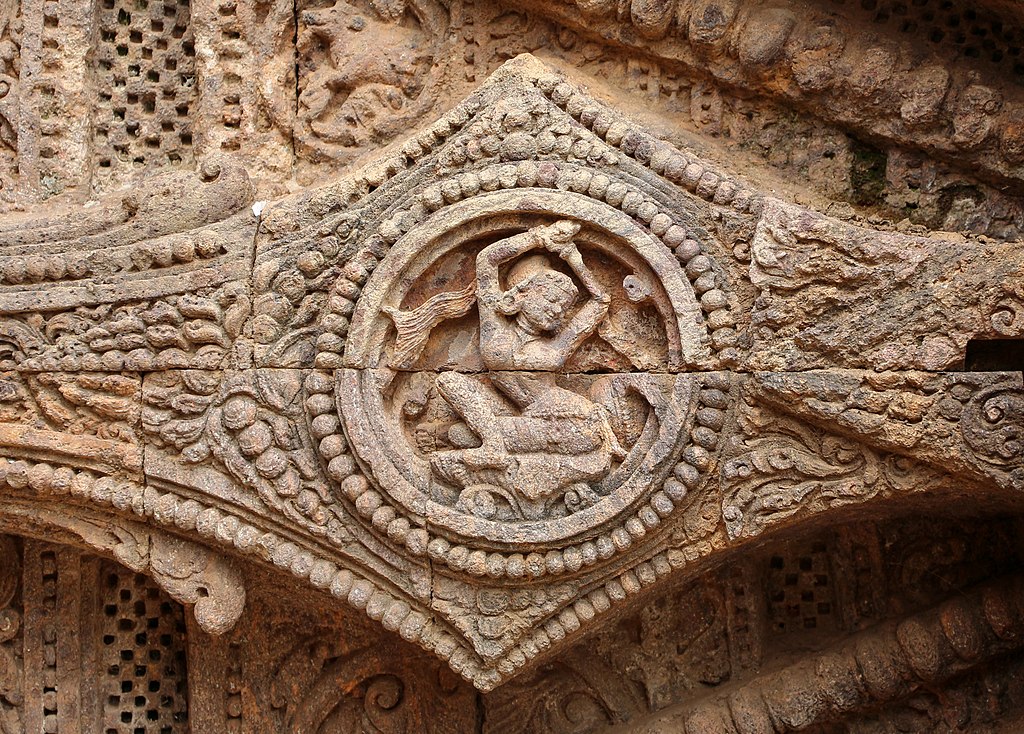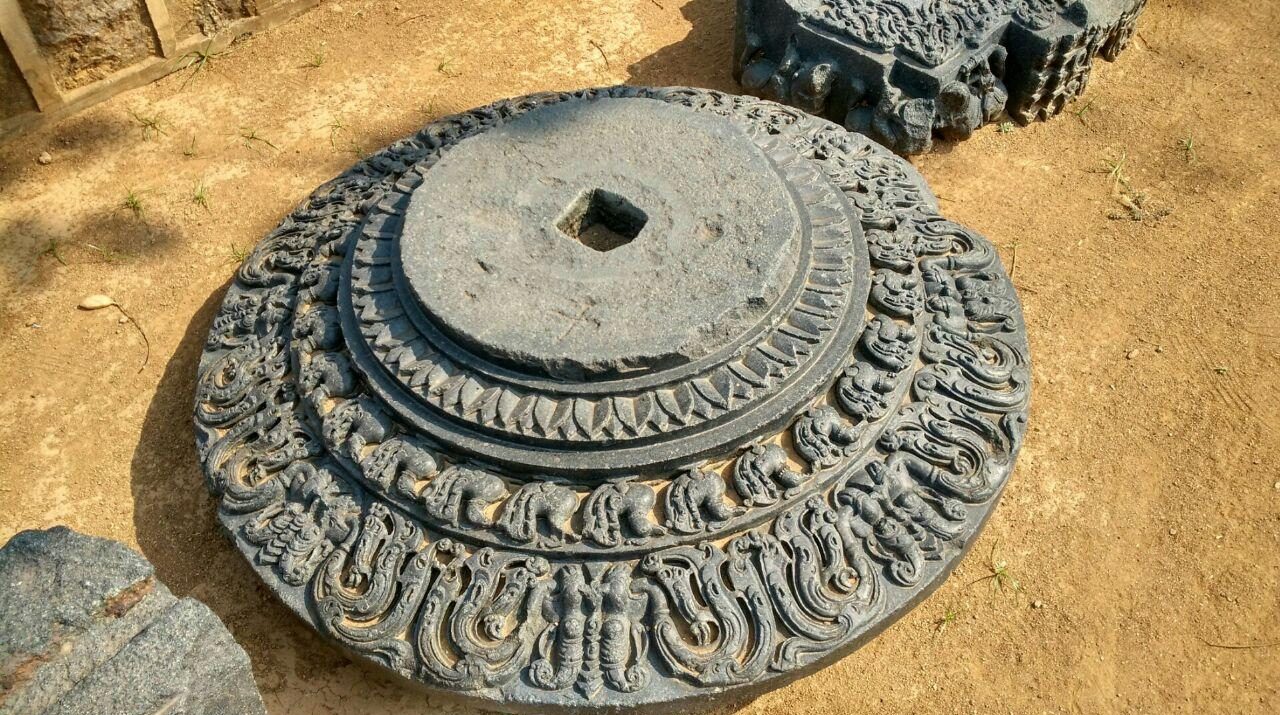There are many semi-divine beings other than Gods in Hindu mythology, who are neither God or demon. Apsaras are celestial nymphs who belong to this category. They are beautiful and excellent dancers, usually wives of the Gandharvas who are the musicians. They entertain in the palaces of the Gods.They are adept at the art of seduction of Gods and men. They can take flight, change shape and are compared to angels. Apsaras rule over fortunes of gambling and are associated with fertility rites. The famous apsaras at Indra’s court are Urvashi, Rambha, Menaka, Tilottama and Ghritachi.
Apsaras have risen when the ocean was churned; samudramanthana. They are both resplendent and celestial.They did not undergo purification and no God would marry them. They are the dancing girls of Indra’s court. The Apsaras are widely mentioned in literature. The Rigveda, Mahabharata mention them.An entire hymn in the RIgved deals with the colloquy between Apsara Urvashi and her mortal lover Pururavas. Mnay stories of the Mahabharata depict them in supporting roles. Apsara Tilottma is mentioned to have saved the world from demons Sunda and Upasunda. Apsara Urvashi tried to seduce Pandava Arjuna.
Apsara Menaka was sent by Indra who was afraid of the power of the penance of Sage Vishwamitra . Menaka distratced him and seduced him; a daughter Shakuntala was born to them. Apsaras have been depicted in sculpture and paintings in India and other Asian countries. They represent song and dance, beauty and seduction. Gandharvas in heaven are their male partners who have great musical skills.

Apsara,sandstone statue,12th-century, Uttar Pradesh, India.
By Beta.s2ph – Own work, Public Domain, https://commons.wikimedia.org/w/index.php?curid=6094036
The apsara depicted above is from Uttar Pradesh and the figure is shown heavily ornamented.The sculptor has twisted the figure of the celestial nymph in order to capture the essence of her dance movement. The jewellery also has a sense of fluidity along her supple body. The carving of the ornaments is crisp and rich in detail. Images of dancing semi-divine attendants often appear on the outer walls of Hindu temples. They are placed near the figures of gods to honour the deity.
Apsara, 7th-8th century,Museum of Cham, Vietnam.
By Daderot – Own work, CC0, https://commons.wikimedia.org/w/index.php?curid=34471972

Apsara relief , Angkor Wat, 12th century,Cambodia.
by Andrew Lih , The original uploader was Fuzheado at English Wikipedia – Transferred from en.wikipedia to Commons by Closedmouth., CC BY-SA 2.0, https://commons.wikimedia.org/w/index.php?curid=6220924
Apsaras playing instruments,embossed copper sheet, 18th century ,Bhutan, Ethnological Museum, Berlin.
By Daderot (Own work) [CC0], via Wikimedia Commons

Apsara in detail of a chariot wheel of the Sun Temple, 13th century,Konarak, Odisha.
By Bernard Gagnon – Own work, CC BY-SA 3.0, https://commons.wikimedia.org/w/index.php?curid=35984473

Apsara, Kalighat painting, 19th-20th century, Kolkata.
By http://wellcomeimages.org/indexplus/obf_images/7b/36/d10ba47900bd87364ba93130397d.jpgGallery: http://wellcomeimages.org/indexplus/image/V0045150.html, CC BY 4.0, https://commons.wikimedia.org/w/index.php?curid=36660482
Apsara, stone sculpture, Padmanabhapuram Palace, Early 17th century, Kerala.
By Jagadhatri – Own work, CC BY-SA 3.0, https://commons.wikimedia.org/w/index.php?curid=18846718
Flying Apsara, early 18th century, wood with pigment,Japan, San Diego Museum of Art, USA.
By Daderot – Own work, CC0, https://commons.wikimedia.org/w/index.php?curid=26811429

The Dance of the Apsaras, ,relief from Bharhut, built 2-3rd century B.C., Indian Museum, Calcutta, image of 1925.
By Unknown – http://www.columbia.edu/itc/mealac/pritchett/00routesdata/1800_1899/women/nautchearly/nautchearly.html, Public Domain, https://commons.wikimedia.org/w/index.php?curid=31188548

Apsara, 15th century, striated marble, Rajasthan, Los Angeles County Museum of Art ,USA.
By Wikipedia Loves Art participant “ARTiFACTS” – Uploaded from the Wikipedia Loves Art photo pool on Flickr, CC BY-SA 2.5, https://commons.wikimedia.org/w/index.php?curid=8895055

Tara or Apsara Surasundari,bas-relief, Borobudur, 9th century, Central Java, Indonesia.
By Gunawan Kartapranata – Own work, CC BY-SA 3.0, https://commons.wikimedia.org/w/index.php?curid=17193615

Apsaras next to deity, relief panel, Vishnu temple, Prambanan, Java, Indonesia.
By Gunawan Kartapranata – Own work, CC BY-SA 3.0, https://commons.wikimedia.org/w/index.php?curid=17192283

Apsara Menaka taking her daughter Shakuntala with her when King Dushyant deserts her, painting, 19th century, Raja Ravi Varma.
By Raja Ravi Varma – http://www.museumsyndicate.com/item.php?item=25521, Public Domain, https://commons.wikimedia.org/w/index.php?curid=15006037
A surasundari is a young maiden who is an epitome of feminine beauty and sensuality. In many temples they are depicted as attendants of Gods and Goddesses.They manifest as dancing apsaras and salabhanhjikas or tree-nymphs.Other forms include, darpani, ketakibharana,matrika,chamari,torana,dalamalika,padmagandha, nartaki,shukasarika,nupurapadika,mardala, alasakanya and shubhagamini. The surasundari is believed to represent feminine energy.

Surasunadari, Krishna Temple, 16th century, Vijayanagara.
The surasundari shown above braces her right hand on the head of an attendant, as he removes a thorn from her heel. She also uses her bow to balance herself. A quiver of arrows is carved in shallow relief behind her back.
By G41rn8 – Own work, CC BY-SA 4.0, https://commons.wikimedia.org/w/index.php?curid=42564225

Surasundari,sculpture, 11th century,Khajuraho,Madhya Pradesh.
By Sushmaahuja17 – Own work, CC BY-SA 4.0, https://commons.wikimedia.org/w/index.php?curid=51948462

Sunda and asura Upasunda disputing Apsara Tilottama. Cambodia, 10th century, Sandstone, Musée Guimet, Paris.
By Vassil – Own work, Public Domain, https://commons.wikimedia.org/w/index.php?curid=2835022
The love story of King Pururavas and Apsara Urvashi is a part of the Sanskrit play composed by poet Kalidasa, Vikramovasyam. The story’s earlier versions are in the Rigveda and later in the Mahabharata, the Harivamsa, the Vishnu-purana, the Matsya-purana etc. Urvashi was the consort of King Pururavas for some time. They had met when Urvashi had come to earth, but eventually left him as he had broken some conditions laid down by her. Raja Ravi Varma has captured a part of the story in his painting.

Urvashi and Pururavas,painting, 19th century, Raja Ravi Varma.
By Raja Ravi Varma – Painting by Raja Ravi Varma, Public Domain, https://commons.wikimedia.org/w/index.php?curid=1617856
References :
- Epics, myths and legends of India/Thomas, P, Bombay : D.B. Taraporevala and Sons.
- wikipedia.org
Posted by :
Soma Ghosh
© author



